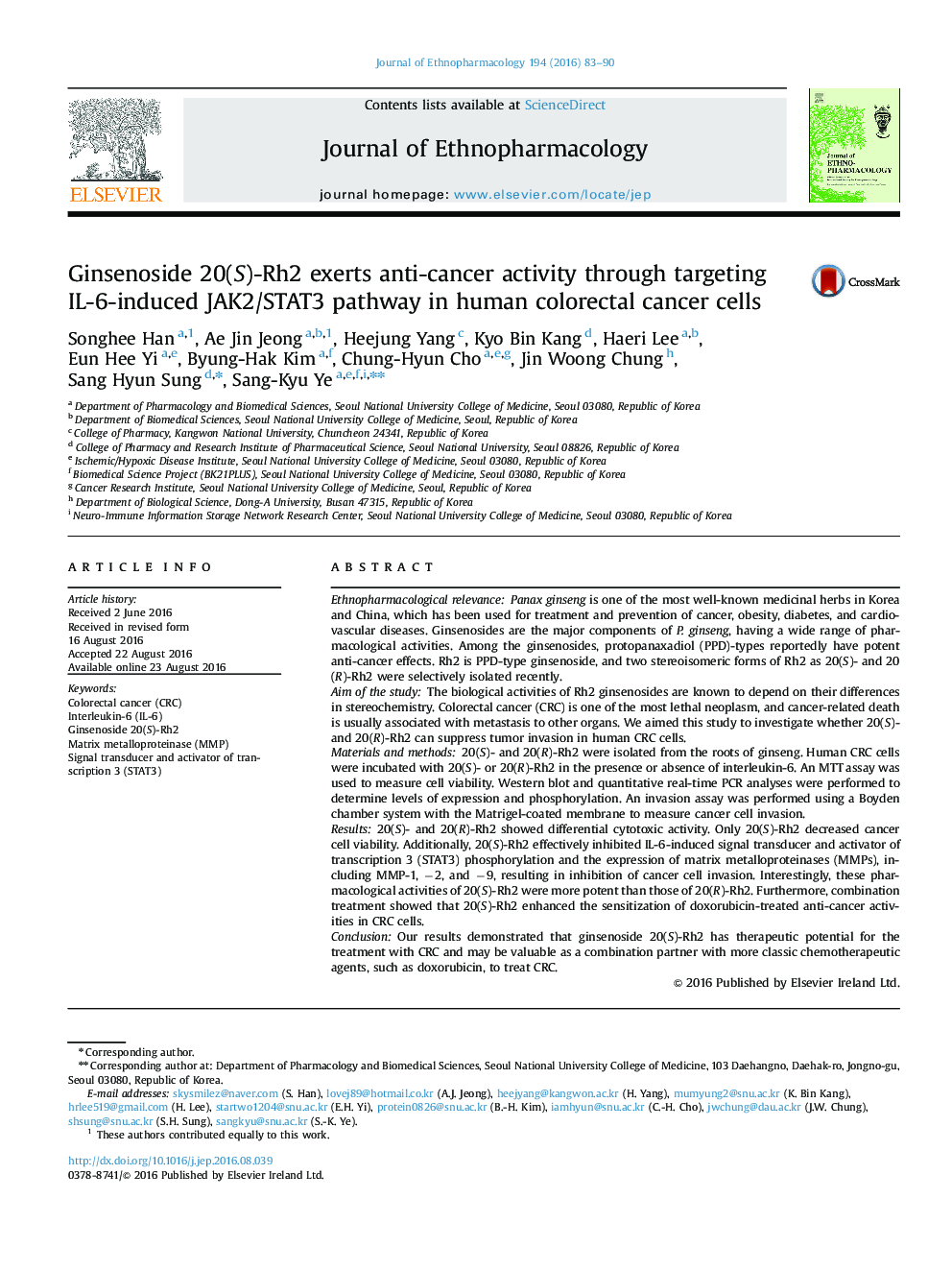| Article ID | Journal | Published Year | Pages | File Type |
|---|---|---|---|---|
| 5834339 | Journal of Ethnopharmacology | 2016 | 8 Pages |
Ethnopharmacological relevancePanax ginseng is one of the most well-known medicinal herbs in Korea and China, which has been used for treatment and prevention of cancer, obesity, diabetes, and cardiovascular diseases. Ginsenosides are the major components of P. ginseng, having a wide range of pharmacological activities. Among the ginsenosides, protopanaxadiol (PPD)-types reportedly have potent anti-cancer effects. Rh2 is PPD-type ginsenoside, and two stereoisomeric forms of Rh2 as 20(S)- and 20(R)-Rh2 were selectively isolated recently.Aim of the studyThe biological activities of Rh2 ginsenosides are known to depend on their differences in stereochemistry. Colorectal cancer (CRC) is one of the most lethal neoplasm, and cancer-related death is usually associated with metastasis to other organs. We aimed this study to investigate whether 20(S)- and 20(R)-Rh2 can suppress tumor invasion in human CRC cells.Materials and methods20(S)- and 20(R)-Rh2 were isolated from the roots of ginseng. Human CRC cells were incubated with 20(S)- or 20(R)-Rh2 in the presence or absence of interleukin-6. An MTT assay was used to measure cell viability. Western blot and quantitative real-time PCR analyses were performed to determine levels of expression and phosphorylation. An invasion assay was performed using a Boyden chamber system with the Matrigel-coated membrane to measure cancer cell invasion.Results20(S)- and 20(R)-Rh2 showed differential cytotoxic activity. Only 20(S)-Rh2 decreased cancer cell viability. Additionally, 20(S)-Rh2 effectively inhibited IL-6-induced signal transducer and activator of transcription 3 (STAT3) phosphorylation and the expression of matrix metalloproteinases (MMPs), including MMP-1, â2, and â9, resulting in inhibition of cancer cell invasion. Interestingly, these pharmacological activities of 20(S)-Rh2 were more potent than those of 20(R)-Rh2. Furthermore, combination treatment showed that 20(S)-Rh2 enhanced the sensitization of doxorubicin-treated anti-cancer activities in CRC cells.ConclusionOur results demonstrated that ginsenoside 20(S)-Rh2 has therapeutic potential for the treatment with CRC and may be valuable as a combination partner with more classic chemotherapeutic agents, such as doxorubicin, to treat CRC.
Graphical abstractDownload high-res image (166KB)Download full-size image
